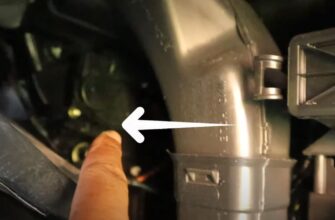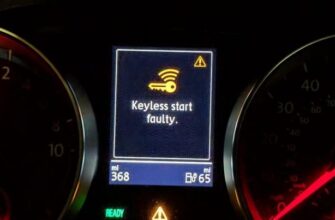Ah, the Jeep Wrangler! Iconic, capable, and usually incredibly reliable… except when it starts acting like it’s possessed by gremlins. If your Wrangler is experiencing mysterious electrical issues – random lights, things turning on or off by themselves, or even trouble starting – you might be dealing with a failing TIPM.
The TIPM, or Totally Integrated Power Module, is a component that strikes fear (or at least deep frustration) into the hearts of many Jeep owners. It’s a known weak point in certain years, particularly the JK generation (roughly 2007-2018). But what exactly is it, and how do you know if it’s the source of your Jeep’s bizarre behavior?
Let’s shed some light on this notorious part and the symptoms it can cause.

What is the TIPM and Why Does It Cause Problems?
Think of the TIPM as the central nervous system of your Jeep’s electrical system. Located under the hood, often combining the fuse box and relay center, it’s a complex computer module that controls and distributes power to nearly every electrical component in your vehicle.
The Brains (and Brawn) of the Electrical System
The TIPM manages everything from your fuel pump and headlights to your wipers, horn, power windows, and even sends signals between different computer modules in the car. It’s like a massive, highly sophisticated switchboard that decides where and when the electricity goes.
Why They Fail
Unfortunately, certain generations of TIPMs in Chrysler, Dodge, and Jeep vehicles (including the Wrangler) have a reputation for internal failure. This can be due to manufacturing defects, heat, vibration, voltage spikes, or even corrosion getting into the unit over time. When the internal components fail, the module starts sending incorrect signals or cutting power unexpectedly, leading to those maddening intermittent problems.
Recognizing TIPM Failure Symptoms (The Weird Stuff Starts Happening)
The frustrating thing about a failing TIPM is that the symptoms can be incredibly varied and seem completely unrelated to each other. This is because the TIPM controls so many different systems!
Fuel Pump & Starting Issues
One of the most concerning symptoms is when the TIPM malfunctions in controlling the fuel pump.
- Engine cranks but won’t start (intermittently).
- Fuel pump continues to run even after you’ve turned the engine off.
- The engine unexpectedly stalls while you’re driving.
“For months, my JK would just randomly refuse to start, or sometimes die at a stop light. Mechanic kept saying they couldn’t find anything obvious. Finally went to a Jeep specialist, and they diagnosed the TIPM. Replaced it, and the starting problems vanished.” – Chris A., Jeep Wrangler Owner
Experiencing issues with your car starting can be incredibly stressful. If you’re dealing with electronic faults preventing your vehicle from firing up, you might find our guide on What to Do When Your VW Won’t Start Due to Error Stabilisation Control helpful for understanding how complex electronic systems can cause no-start conditions.
Lighting Problems
The TIPM controls many exterior lights, and their erratic behavior is a classic sign.
- Headlights, taillights, or turn signals staying on when they should be off.
- Lights not turning on when they should.
- The horn honking randomly or not working at all.
- Fog lights failing to turn on.
Wiper and Washer Problems
Unexpected wiper activity is another common TIPM symptom.
- Wipers turning on by themselves when the stalk is in the off position.
- Wipers not working on certain speeds or not working at all.
- Washer fluid pump activating randomly.
Other Unpredictable Electrical Gremlins
Because the TIPM is so central, its failure can manifest in many other strange ways:
- Power windows or door locks acting erratically (less common, but possible).
- The airbag warning light coming on for no apparent reason.
- HVAC system issues, like the blower motor speed fluctuating wildly or not working.
- Various random dashboard warning lights illuminating intermittently.
- Radio or power outlets losing power or acting strangely.
- In some cases, it can even contribute to the vehicle entering a limited “limp mode”.
“My Wrangler started having the weirdest issues – wipers would come on by themselves, then the horn would randomly chirp. It felt totally random! Took forever to figure out it was the TIPM going bad.” – Sam K., Frustrated Jeep Owner
Understanding different car error messages and system faults can help make sense of these confusing issues. We’ve explored other strange electronic problems, like the The Dreaded Park Brake Fault on Rover Discovery, which also involves a complex control module.
Why Diagnosing a TIPM is Tricky
Identifying a failing TIPM can be challenging, even for experienced mechanics.
Intermittent and Unrelated Symptoms
The key difficulty is that the symptoms are often intermittent and affect seemingly unrelated systems. This makes it hard to isolate the problem to a single component without proper testing.
Standard Diagnostics May Not Be Enough
Sometimes, generic OBD-II scanners may not read specific enough codes to point directly to the TIPM. Dealership-level diagnostic tools are often needed to confirm a TIPM failure.
“My mechanic was scratching his head because the check engine light wasn’t on, and the codes he pulled didn’t directly say ‘TIPM is bad’. It was the pattern of the random electrical glitches that finally made him suspect it.” – David L., Problem Solver
Even common warning lights, like a Flashing Check Engine Light After Filling Gas on Jeep Wrangler, can sometimes have underlying causes related to overall system health, which the TIPM heavily influences.
What to Do If You Suspect TIPM Failure
If your Jeep Wrangler is exhibiting several of these random, electrical symptoms, the TIPM is a strong suspect.
Document Everything
Keep a log of when the strange events occur, what system was affected, and what the symptom was. This information is invaluable for a diagnostic technician.
Basic Checks (Battery & Fuses)
While TIPM failure is often internal, rule out the simple things first. Ensure your battery is healthy and fully charged (low voltage can cause many weird electrical issues). Check that relevant fuses and relays are properly seated and not obviously blown, though a blown fuse might be a symptom of a TIPM fault, not the cause.
Seek Professional Diagnosis
Repairing or replacing a TIPM is rarely a DIY job due to the cost of the part, the need for specific programming, and the complexity of accessing/replacing it. It requires accurate diagnosis, typically with dealer-level tools.
Frequently Asked Questions (FAQ)
Q: What years of Jeep Wrangler are most known for TIPM problems?
A: The TIPM issues are most commonly associated with the JK generation of the Jeep Wrangler, roughly model years 2007 through 2018. Other Chrysler/Dodge/Jeep vehicles from this era may also experience similar TIPM-related problems.
Q: Can I fix a failing TIPM myself?
A: While some minor issues related to relays or fuses within the TIPM might be addressable, internal electronic failure of the TIPM itself is generally not repairable by a DIYer. It’s a complex circuit board and needs replacement.
Q: How much does TIPM replacement cost?
A: TIPM replacement is typically an expensive repair. The cost of the part itself can be significant, plus labor for diagnosis and replacement, and potentially programming the new module to your vehicle. Costs can vary widely but expect it to be a substantial expense.
Q: Is there a recall for Jeep Wrangler TIPM issues?
A: There have been specific recalls related to certain TIPM functions in some vehicles, notably related to the fuel pump relay issue which could cause stalling. However, there wasn’t a broad recall covering all potential TIPM failures on all vehicles. You can check your VIN for specific recalls.
Q: Can a bad car battery cause symptoms similar to TIPM failure?
A: Yes, absolutely! A weak or failing battery can cause a wide range of bizarre and intermittent electrical problems that can easily be mistaken for TIPM issues. Always have your battery tested thoroughly as a crucial first step when diagnosing electrical gremlins.
Conclusion
The Totally Integrated Power Module (TIPM) is a vital but sometimes problematic component in the Jeep Wrangler, known for causing a bewildering array of random electrical symptoms. From starting issues and stalling to erratic lights and wipers, a failing TIPM can make your Jeep act very strange. If you’re experiencing these kinds of unpredictable problems, especially if they seem unrelated, a faulty TIPM is a strong possibility. While you can check basic things like your battery and fuses, accurate diagnosis and repair typically require professional expertise. Don’t let a bad TIPM sideline your adventures – get it diagnosed correctly to restore your Wrangler’s reliable performance.








